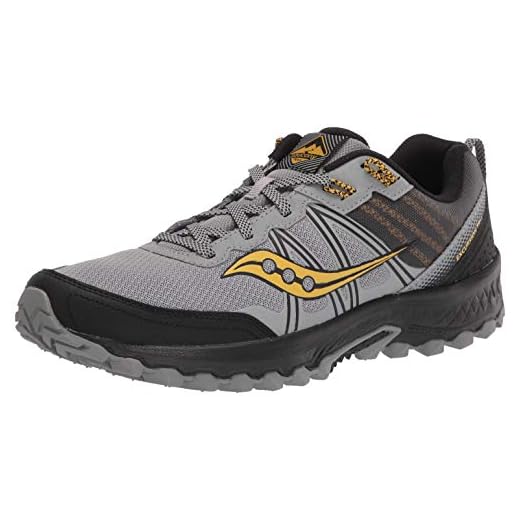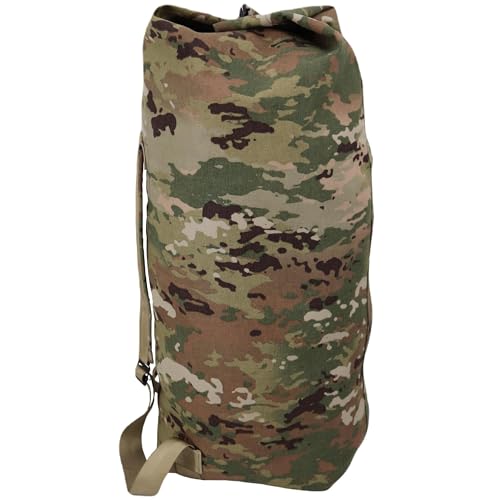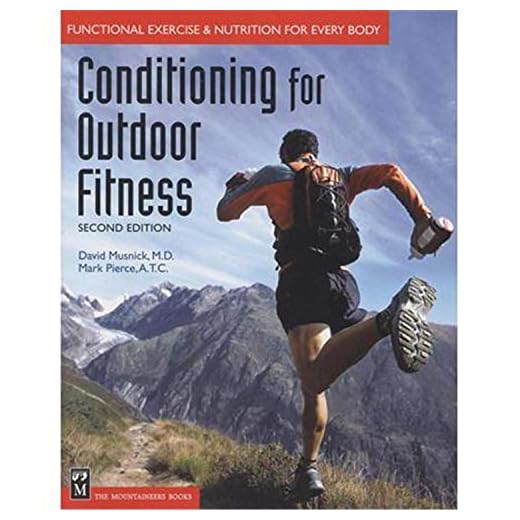



Plan: an 8-week cycle with three aerobic sessions (30–60 minutes), two resistance sessions (40–60 minutes), one long loaded hike at weekend (start 8–12 km, increase ~10% distance weekly) and one full rest day. Limit weekly volume increases to 10%. Target sustained pace of 3–4 km/h on mixed terrain while carrying the target load.
Strength work: twice weekly, prioritize posterior chain and single-leg stability: Romanian deadlifts 3×6–8, weighted step-ups 3×8 each leg, split squats 3×8–10, calf raises 3×12–15, core planks 3×45–90 s. Add load progressively every 1–2 weeks while keeping technique pristine; include one loaded-hike session with steep repeats (6–8 repeats of 100–200 m ascent) every 10–14 days.
Cardio structure: one interval session (e.g., 6×1 min hard with 2 min easy or 4×4 min high-tempo) plus one steady-state session 45–90 minutes at moderate effort. Aim intervals at ~85%–95% HRmax or RPE 8–9/10, steady work at ~70%–80% HRmax or RPE 5–6/10. Replace a cardio day with stair-climbing or treadmill incline to reproduce sustained ascent demands.
Load progression & simulations: begin practice with unloaded hikes, add 1–2 kg each week until reaching target percentage; validate endurance with at least one 12–20 km loaded hike every two weeks. Perform a full-gear shakedown (pack, footwear, food) at least twice before departure, including a multi-day simulated sequence if itinerary includes consecutive heavy days.
Altitude, hydration, nutrition: above 2,500 m, restrict overnight elevation gain to 300–500 m per 24 hours with a 24–48 hour acclimation stop after large gains. Hydration during exertion: 0.5–1.0 L/hour plus electrolytes; when sweating heavily, plan 300–700 mg sodium daily from snacks or supplements. Daily energy expenditure typically ranges 3,000–5,000 kcal depending on load and duration; pack 200–300 kcal/hour in snacks and plan 600–900 kcal meals at camp.
Gear fit & injury prevention: set hipbelt to carry 60%–70% of pack mass; position load to keep center of mass over hips. Break in footwear across 50–100 km of mixed terrain; test sock/shoe pairings to eliminate hot spots. Use trekking poles to cut knee load by ~20% on steep descents. Schedule one complete rest day weekly, include sleep, mobility work and light massage or foam rolling to accelerate recovery.
Checkpoint metrics: complete a 20–25 km loaded hike at target weight with ≥1,000 m ascent, maintain average 3–4 km/h, finish with perceived exertion ≤7/10 and recoverable soreness within 48 hours. If these metrics are not met, extend preparation 2–4 weeks and repeat the highest-load weekend simulation until targets are reached.
8-week pack-weight progression plan for multi-day hikes
Recommendation: Begin at 40% of your target fully-loaded weight and progress to 100% by week 8, using a single deload at week 4 set to ~45% of target to consolidate adaptation.
Define target fully-loaded weight (FLW) as actual pack weight with food, water, fuel and consumables. Typical ranges: lightweight 11–16 kg (25–35 lb); moderate 16–20 kg (36–45 lb). Example target used below: 16 kg (35 lb) FLW.
Example weekly progression (target = 16 kg / 35 lb): Week 1 – 40% → 6.4 kg (14 lb); Week 2 – 50% → 8.0 kg (18 lb); Week 3 – 60% → 9.6 kg (21 lb); Week 4 (deload) – 45% → 7.2 kg (16 lb); Week 5 – 65% → 10.4 kg (23 lb); Week 6 – 80% → 12.8 kg (28 lb); Week 7 – 90% → 14.4 kg (32 lb); Week 8 – 100% → 16.0 kg (35 lb).
Weekly session template: 3–4 loaded walks per week plus 2 short strength sessions. Example microcycle: Monday – strength (30–45 min): 3×8 goblet squats, 3×6 single-leg RDL, 3×8 step-ups; Wednesday – 6–10 km loaded walk with cumulative ascent 200–400 m and target week’s load; Friday – strength mobility (bodyweight hip hinge, core) 20–30 min; Saturday – long loaded hike (progressive distance): Week 1 = 8 km; Week 2 = 12 km; Week 3 = 16 km; Week 4 = reduce distance by ~30% and use deload weight; Weeks 5–8 increase distance to simulate multi-day cadence, culminating in a full-day carry at 100% on week 8.
Set pace targets: maintain conversational pace while carrying load; RPE 5–7 on long days. Monitor resting morning heart rate; an unexplained +8–10 bpm above baseline across 2 mornings indicates need to reduce load or add sleep.
Consumables simulation: add 1 L water = 1 kg. If route lacks resupply, simulate peak water load of 2–3 L during long carries. Pack food weight as planned rations per day; test at full cooked weight where applicable. Test fuel and stove packed exactly as it will be during the multi-day event.
Load distribution checks: keep heavy items low and centered; hip belt loaded to transfer ~60–70% of static weight onto hips. Adjust shoulder straps and load lifters so pack sits high on hips without shoulder pinch during 30–60 min of walking at target load.
Progression adjustments: if pace drops >20% relative to unloaded baseline or DOMS exceeds 72 hours with reduced mobility, reduce weekly load by one step and repeat that week. Sharp joint pain, numbness or persistent tingling requires immediate reduction of load and clinical assessment prior to resuming increases.
Final validation week: schedule a continuous 8–12 hour field day at 100% FLW with planned resupply simulation; evaluate foot skin condition, blister management, hip strap comfort, stove operation and sleeping system packing time. Log actual measured weights and modify gear list to shave unnecessary mass until target FLW becomes tolerable for repeated days.
Set daily mileage and pace targets by trail profile
Aim 12–15 mi/day on rolling singletrack with 1,000–2,500 ft cumulative ascent; target 2.0–2.5 mph on flats, 0.8–1.2 mph on sustained climbs, 1.5–2.0 mph on long descents.
- Base pace by surface:
- Graded dirt/road: 3.0–3.5 mph.
- Rolling singletrack: 2.5–3.0 mph.
- Steep mountain tread: 1.5–2.2 mph.
- Technical rock/scree/scrambling: 0.5–1.5 mph with frequent stops.
- Typical climb rates by ability: novice 600–900 ft/hr; fit 1,000–1,500 ft/hr; elite 1,800+ ft/hr.
- Elevation adjustment: add 0.5 h per 1,000 ft ascent to flat walking time; at elevations >8,000 ft increase total time by 10–25% depending on symptoms.
- Terrain multiplier: loose/rocky +25%; boulder/scrambling +40–50%; route-finding sections add time equivalent of 0.5–1.5 mi per obstacle.
- Load effect: pack mass >35 lb add 10–20% time; >45 lb add 20–35% time.
- Consecutive-day fatigue: after day 2 add 5–12% per subsequent day unless rest day inserted.
- Weather and trail conditions: rain/mud/snow add 10–35% depending on traction and visibility.
Quick calculation method: Total time = (flat miles ÷ v_flat) + (total ascent_ft ÷ 1000 × 0.5 h). Apply terrain, load and fatigue multipliers to that subtotal; convert to miles if you need a daily target by rearranging.
- Example A – 14 mi, 2,500 ft ascent, rolling singletrack:
- Flat time: 14 ÷ 2.5 = 5.6 h.
- Ascent add: 2.5 × 0.5 = 1.25 h → subtotal 6.85 h.
- Light technical +10% → 7.54 h (~7 h 32 m). Set target ~7.5 h on trail clock.
- Example B – 18 mi, 3,200 ft ascent, heavy boulder fields:
- Flat time (v_flat 2.0 mph): 9.0 h.
- Ascent add: 3.2 × 0.5 = 1.6 h → subtotal 10.6 h.
- Terrain multiplier 1.4 → 14.84 h → split into two days or reduce planned miles to 10–12 on the technical day.
- Planning checklist:
- Choose a daylight window and back-calculate target pace to finish before nightfall.
- Run a loaded rehearsal day on similar ground; use measured mph and ft/hr to scale targets.
- Schedule one low-mileage recovery day every 5–7 days (reduce planned miles 25–40%).
- Gear note: test a lightweight, well-fitting pack under load; product ideas: best backpack grad school
Build leg and core strength with simple home exercises
Do 3 sessions weekly: 2 lower-body strength days plus 1 core day; session length 30–45 minutes; increase load or difficulty every 7–10 days using added weight, reduced assistance, or extra reps.
Lower-body sessions
Day structure: warm up 5–8 minutes (dynamic leg swings, hip circles, calf raises), main block 20–30 minutes, mobility finish 3–5 minutes. Primary lifts: Bulgarian split squat – 3–5 sets × 6–10 reps each leg, tempo 3s descent, 1s pause, explosive ascent, rest 90–120s. Single-leg Romanian deadlift – 3–4 sets × 6–10 reps each leg, slow eccentric, use dumbbell, sandbag, or two filled water jugs. Reverse lunge – 3 sets × 8–12 reps each leg, controlled step back, knee alignment. Step-up onto a 20–30 cm stable surface – 3–4 sets × 8–12 reps each leg, hold weight at chest to increase challenge. Calf raises (double then single) – 3 sets × 12–20 reps, 2s pause at top.
Progression rules: add 2–4 kg equivalent every 7–10 days when all target reps complete with good form; if no weight available, add reps, slow tempo, or switch to unilateral variations to raise intensity. Rest 48 hours between lower-body sessions.
Core session
Main circuit: front plank holds, side plank holds, dead-bug, and Pallof press with resistance band. Prescription: front plank 3 sets × 40–90 seconds (add 10–15 seconds each week until 90s), side plank 3 sets × 30–60 seconds per side, dead-bug 3 sets × 8–12 slow reps per side, Pallof press 3 sets × 8–12 reps each side with band at chest height. Add loaded carries (farmer walk) 2 × 40–80 meters using suitcases or water jugs to tax core stabilization under load.
Tempo and breathing: maintain neutral spine, inhale at easier phase, exhale while bracing during exertion. If neck pain appears, regress to knee planks or reduce hold time by 20–30% and rebuild.
Sample weekly layout: Day 1 Lower heavy (low reps, higher load), Day 2 Active recovery (mobility, short walk), Day 3 Core session, Day 4 Lower volume (higher reps, lighter load), Day 5 Rest, Day 6 Optional steady-state leg endurance session (bodyweight circuit, 30–45 minutes), Day 7 Rest or gentle mobility.
| Exercise | Week 1 | Week 2 | Week 3 | Week 4 |
|---|---|---|---|---|
| Bulgarian split squat | 3×8 per leg, bodyweight or light load | 3×8 per leg, add 2–4 kg equiv. | 4×6 per leg, moderate load | 4×6 per leg, add 2–4 kg equiv. |
| Single-leg RDL | 3×8 per leg, slow eccentric | 3×8, increase load slightly | 4×6–8, controlled tempo | 4×6, add weight or longer lever |
| Plank (front) | 3×40s | 3×50s | 3×60s | 3×75–90s |
| Pallof press (band) | 3×10 each side | 3×12 each side | 3×12–15 each side, stronger band | 3×15 each side, hold 2s at full extension |
Key safety cues: keep knee tracking aligned with toes on single-leg moves, hinge at hips during posterior chain work, keep neutral cervical spine during planks, and increase load only when all reps maintain clean technique.
Practice Elevation Gain and Descending Technique Safely
Limit steep hill sessions to 30–45 minutes at a 6–12% grade, 2–3 sessions weekly; include one session focused on controlled descents.
Uphill mechanics
Use short steps (45–55 cm stride) and a cadence of 60–75 steps per minute; keep the torso angled slightly forward from the ankles, not the waist, and swing poles in rhythm with each step.
Pole settings: shorten poles by 5–10 cm compared to flat-ground length to maintain an approximate 90° elbow bend; plant poles slightly ahead of foot strike to assist propulsion.
Climb repeats: select a 200–400 m segment at target grade; perform 6–8 repeats at steady aerobic effort, recover with 2–4 minutes walking on level terrain between repeats; total session 40–70 minutes.
Downhill mechanics and safety
Use rapid, short steps (80–100 steps per minute) to reduce impact; keep knees soft, hips over feet, and extend poles 10–15 cm longer than flat-ground length so poles accept load ahead of the body.
Foot placement: aim for midfoot-to-forefoot contact on solid rock; on loose scree adopt a sideways zigzag with pole supports; avoid long braking strides that spike eccentric forces.
Eccentric conditioning: twice weekly perform 3 sets of 6–8 single-leg step-downs from a 20–30 cm box with a 4–5 second lowering phase; add a 2–4 kg weight vest only after three weeks if movement remains controlled.
Descending repeats: perform 4–6 downhill-only intervals of 2–4 minutes on 15–30% gradients at a controlled cadence; use an easier ascent or 3–5 minutes rest between repeats to limit muscle damage; cap heavy downhill exposure at one session every 5–7 days.
Footwear selection: choose soles with 4–6 mm lugs and moderate midsole stiffness to balance grip and ankle mobility; tighten heel hold to prevent lift during steep descents.
Poles reduce knee loading roughly 15–25% when used actively; plant poles early, accept weight through the arms, and avoid rigid arm positioning that creates jerky impacts.
Surface adaptation drills: practice the same route on dry rock, wet roots, and loose scree; on soft ground increase step frequency and shorten stride length by ~20% to maintain balance.
Emergency responses: on a slip lean slightly back, drive a downhill pole sideways to halt rotation, take short lateral steps to regain balance; rehearse controlled falls onto padded ground under supervision to build reflexive movement patterns.
Simulating load and terrain on weekend shakedown hikes
Carry 70–100% of your intended on-trail load on two full-day shakedowns spaced two weeks apart; include one 10–16 km (6–10 mi) loop with 600–1,200 m (2,000–4,000 ft) cumulative elevation gain to validate comfort and gear fit.
Initial sessions: 50–60% of target load, then increase 5–10 percentage points per session until at least one outing uses full planned mass. Use water jugs, rice or sand in sealed sacks to mimic shifting contents. Position the heaviest items centered between shoulder blades and within 5–10 cm of the back; tighten the hip belt so roughly 70–80% of the mass transfers to the pelvis.
Recreate trail features: stair repeats, sustained climbs, short technical descents, loose scree and a brief bushwhack segment. Program one climb block of 20–40 minutes at 30–45% grade, and maintain a steady ascent rate of 200–400 m (650–1,300 ft) elevation gain per hour during longer sections to approximate mountain demands.
Pacing protocol: 45 minutes moving followed by 10 minutes rest. Monitor heart rate: aerobic zone 60–75% HRmax, higher-intensity intervals at 75–85% HRmax (HRmax ≈ 220 − age). Keep the full pack on during short breaks and practice rapid layering changes while loaded to reduce time lost on trail.
Technique drills: don/doff the pack on steep slopes, transfer a weighted item between hips and shoulder straps, perform loaded lateral-step repeats to simulate uneven terrain. Practice controlled descents with shorter steps and active pole planting; expect poles to reduce knee load roughly 15–25% if used with correct rhythm. Add a loaded stair session of 30 minutes up plus 30 minutes down to simulate repeated elevation.
Data to record every shakedown: pack weight, distance, moving time, cumulative elevation, average and peak heart rate, RPE (1–10), blister/hotspot timing and exact location. If acute joint pain occurs, stop immediately and remove weight; mild muscle soreness is acceptable, sharp pain is not.
Scheduling blueprint: two full-load shakedowns within the six weeks before a multi-night expedition, plus weekly short loaded walks of 30–90 minutes to maintain conditioning. After a heavy shakedown take a full rest day, then an active recovery session such as an easy walk or mobility work the next day.
If hiking with a dog, review how to keep my dog from attacking the fence before leaving basecamp.
Nutrition, hydration and recovery during conditioning days
Consume 0.6–1.0 g carbohydrate per kg body mass 60–120 minutes before a long conditioning session; include 0.25–0.4 g protein per kg within 30–60 minutes after finishing.
Pre-session examples: 70 g plain bagel ≈ 50 g carbs; medium banana ≈ 27 g carbs; 200 g Greek yogurt + 30 g oats ≈ 40–45 g carbs + 15–20 g protein. If session starts <60 minutes after eating, keep intake to 0.3–0.5 g carb/kg and low fat.
During sessions longer than 60–75 minutes, consume 30–60 g carbohydrate per hour; for efforts >2.5–3 hours use multiple-transport carbs (glucose + fructose) up to ~90 g/hour. Drink 400–800 ml fluid per hour depending on heat and intensity; aim beverage sodium concentration 300–700 mg per litre to replace sweat electrolytes.
Calculate sweat rate: pre-session body mass − post-session body mass + fluid consumed during session = mass lost to sweat; divide by session hours to obtain L/h. Adjust hourly drink volume to keep body-mass loss under 2% during single sessions.
Rehydration guideline: replace 1.5 L fluid per kg body-mass lost within the subsequent 2–4 hours; include 20–40 g carbohydrate and 300–600 mg sodium per litre in the rehydration drink to speed recovery.
Daily energy and macro targets on moderate-to-heavy conditioning days: carbohydrates 5–7 g/kg body mass (increase to 7–10 g/kg on very high volume days), protein 1.6–2.2 g/kg, fat to fill remaining calories. Add 200–500 kcal on high-volume conditioning days to maintain body mass while increasing load.
Post-session recovery routine: immediate snack with 0.3 g protein/kg + 0.5–1.0 g carb/kg within 30–60 minutes; full meal (20–40 g protein, 60–100 g carbs) within 2–3 hours. Sleep 7–9 hours nightly; if hard sessions scheduled next day, shift heavier workouts earlier in the week and include at least one low-intensity day between two maximal efforts.
Active recovery and tissue care: 20–40 minutes easy aerobic work the day after a hard session, 5–10 minutes foam rolling targeted at tight muscle groups, 8–12 minutes cold immersion at ~10–15 °C after maximal sessions only. Use compression socks during long periods of sitting or long travel after heavy days.
Practical supplements and acute aids: caffeine 3 mg/kg 30–60 minutes pre-session to improve endurance and alertness; creatine 3–5 g daily to support strength and recovery; omega-3 EPA+DHA 1–2 g daily to assist inflammation control. Prioritize vitamin D status testing and replace to reach 25(OH)D ~50–75 nmol/L if levels are low.
Sample plan for a 70-kg athlete on a heavy conditioning day: pre-session 1–2 hours – 60 g carbs + 15 g protein (≈420 kcal); during 3-hour session – 60–90 g carbs total + 1.2–2.4 L fluids with 400 mg Na/L; immediate post – 25 g protein + 60 g carbs (≈500 kcal); additional meals across the day to reach total intake ≈3,500–4,000 kcal depending on maintenance.
Track adaptation metrics: morning resting heart rate, body-mass trend, sleep duration and quality, session RPE, and lower-limb soreness. Reduce session load or increase calories and sleep when resting heart rate rises ≥6–10 bpm above baseline or when RPE is elevated despite similar workload.










